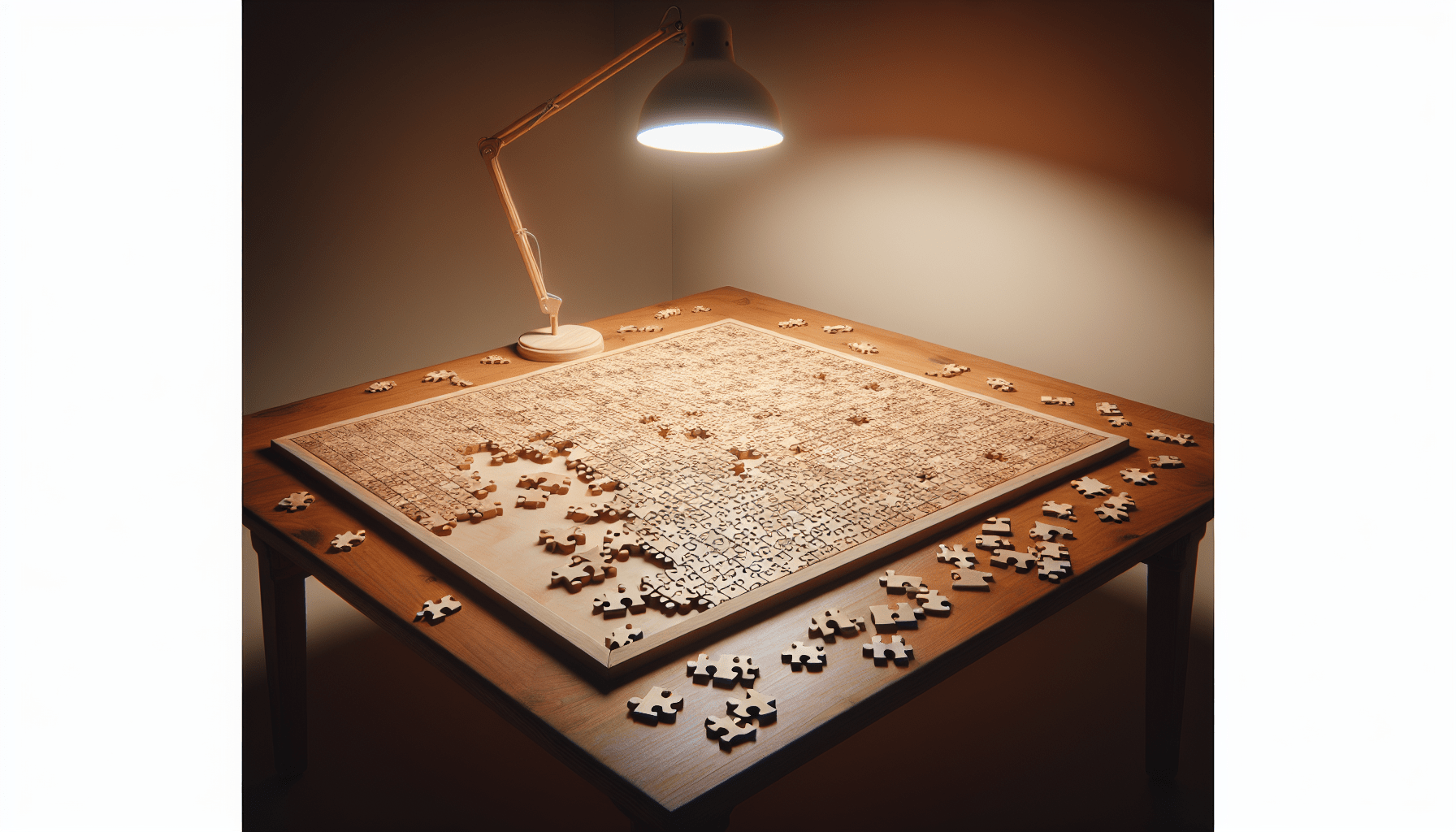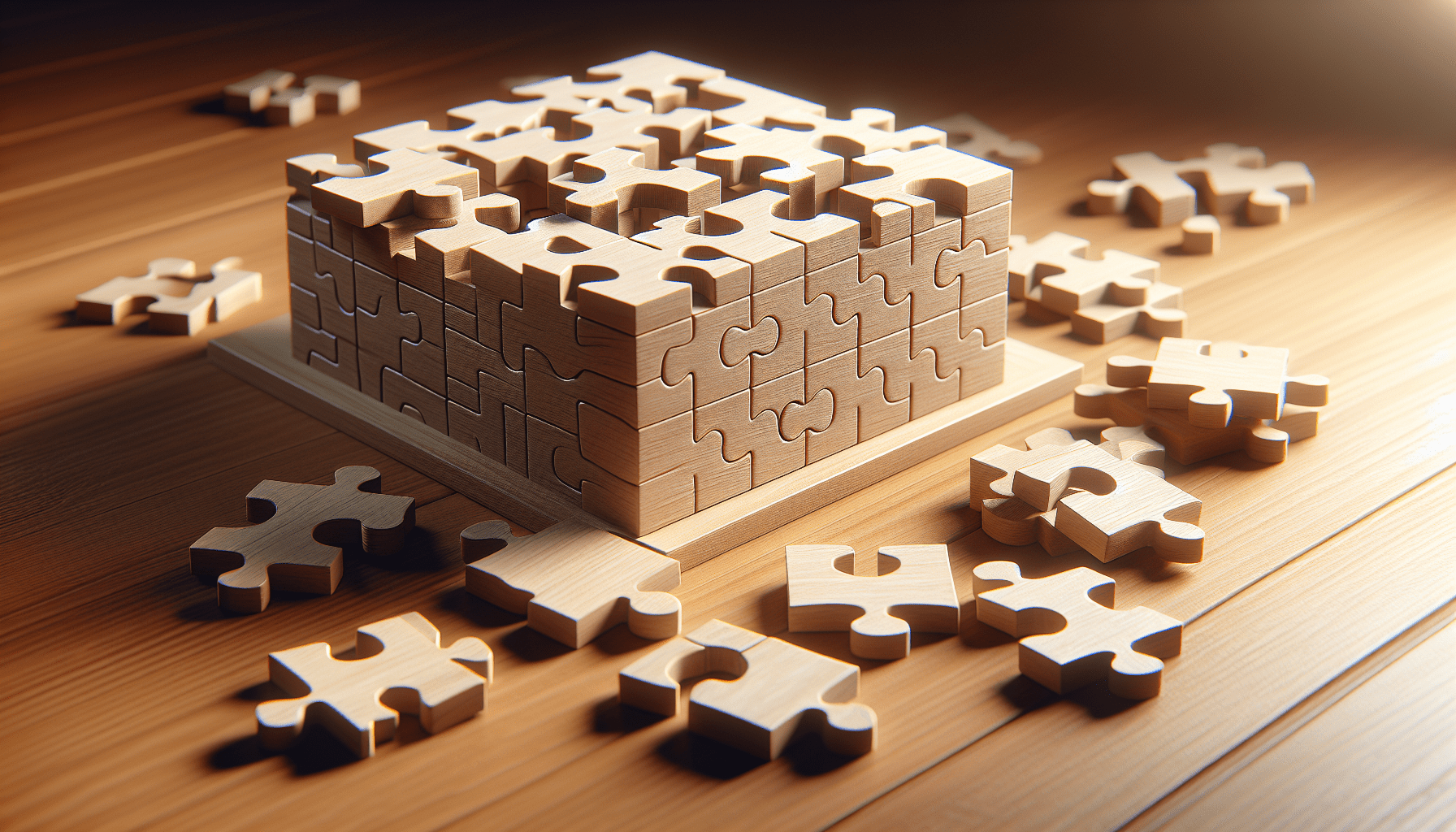Have you ever found yourself completely puzzled by a 3D wooden puzzle, tirelessly turning the pieces in your hands, but finding no way to move forward? It’s a conundrum that many puzzle enthusiasts encounter, and it can be both frustrating and perplexing. Don’t worry, you’re not alone. Let’s walk through some strategies and tips to help you navigate this tricky terrain and piece together your puzzle with confidence.

Understanding Your 3D Wooden Puzzle
Before you can effectively troubleshoot, it’s helpful to gain a deeper understanding of what you’re working with. 3D wooden puzzles come in various forms, often with intricate designs and differing levels of difficulty.
Types of 3D Wooden Puzzles
Here’s a brief overview of some popular brands and their unique characteristics:
| Brand | Characteristics |
|---|---|
| Robotime | Known for high-quality, intricate designs, and detailed instructions. |
| Rokr | Offers mechanical models with moving parts, requiring precise assembly. |
| Ugears | Features mechanical and architectural puzzles, often with gears and moving elements. |
| Wood Trick | Combines traditional wooden elements with mechanical functions. |
| EWA | Produces elegantly designed models, often inspired by historical inventions. |
| Vitascope | Specializes in puzzle models that often incorporate real-life historical mechanisms. |
| Wooden City | Offers complex and detailed puzzles that often require considerable patience and precision. |
| Handmadecity | Provides artisan-crafted puzzles, each with a unique design and style, often with a rustic feel. |
Understanding the type of puzzle can help tailor your solving strategy, as different brands might have particular nuances or common sticking points.
Initial Steps to Take When Stuck
Sometimes being stuck is just a moment of needing a fresh approach. Here are some steps to get you back on track.
Review the Instructions
It might seem simple, but re-reading the instructions can be incredibly helpful. Often, a detail missed the first time around can be the key to your success.
- Read Thoroughly: Go back and read each step carefully. Sometimes a small, overlooked instruction can be the barrier to completing your puzzle.
- Illustrations Matter: Pay close attention to any diagrams. These visual guides can offer perspectives that words alone cannot explain effectively.
Organize Your Pieces
Having all your pieces laid out in an ordered manner can reduce confusion and help you see connections between them.
- Sort by Type: Group similar pieces together. Whether by shape, size, or another identifiable feature, this can make them easier to find when needed.
- Identify Unique Pieces: Some pieces have particular markings or shapes that differentiate them from others, making them integral to specific sections of the puzzle.
Advanced Problem-Solving Techniques
If the initial steps don’t quite do the trick, more advanced strategies might be necessary.
Use Reference Materials
Sometimes external help is required, and there’s no shame in looking up additional resources.
- Online Guides and Tutorials: Many times, other puzzle enthusiasts have shared their solutions online, whether in written guides or video tutorials. These can provide clarity on difficult sections.
- Community Forums: Various puzzle communities exist where you can ask questions and receive advice from others who have completed the same puzzle.
Take a Break
It might seem counterintuitive when you’re eager to solve the puzzle, but sometimes stepping away can be the most beneficial action.
- Clear Your Mind: Taking a break allows you to return to the puzzle with a fresh perspective and renewed patience.
- Focus on Something Else: Engage in a different activity for a while. When you return, you might see the problem through a different lens.
Tools and Tips for Better Assembly
In addition to mental strategies, there are physical tools and tips that can help make the assembly process smoother.
Use the Right Tools
Having the right tools can make a significant difference.
- Tweezers: Useful for handling small pieces or for when you need precision.
- Magnifying Glass: Helps with closely inspecting details, particularly for puzzles with small or intricate parts.
- Lighting: Ensure you have good lighting to avoid straining your eyes, which can cause fatigue and mistakes.
Work in a Suitable Environment
Setting up a conducive work environment can greatly enhance your ability to focus and solve the puzzle.
- Quiet Space: A quiet and distraction-free environment allows you to concentrate better.
- Stable Surface: Working on a flat, stable surface ensures pieces don’t easily fall over or get misplaced.

Common Issues and Solutions
It’s beneficial to know some of the common problems puzzle enthusiasts encounter and their solutions.
Misaligned Pieces
Pieces that don’t seem to fit could be misaligned or from different sections.
- Check Alignment: Ensure that you’re aligning the pieces properly. Sometimes a slight angle adjustment can make them fit perfectly.
- Double-Check Section: Confirm that the pieces belong to the current stage of assembly. It’s easy to grab a piece that belongs to a later step by mistake.
Structural Weakness
Some 3D wooden puzzles can seem fragile or unstable during assembly.
- Patience is Key: Handle the pieces gently, especially if the puzzle involves thin or delicate parts.
- Temporary Reinforcement: Use non-permanent adhesives or small clamps to hold pieces in place temporarily, but ensure they can be removed without damaging the wood.
Missing Pieces
Thinking a piece is missing can be a source of frustration.
- Search Thoroughly: Check the work area thoroughly. Pieces can easily blend into your workspace or drop off the table unnoticed.
- Contact Manufacturer: If a piece is genuinely missing, most reputable manufacturers will offer a replacement if you contact their customer service.
Maintaining Your Puzzle
Once you’ve successfully assembled your 3D wooden puzzle, care and maintenance are essential to keep it in good condition.
Handling
Proper handling ensures that your puzzle remains intact and functional.
- Careful Handling: Always handle your puzzle with clean, dry hands to prevent transferring oils and dirt onto the wood.
- Avoid Excessive Force: Even if the puzzle is complete, it might not be able to withstand rough handling.
Environmental Factors
Wood is sensitive to environmental conditions such as humidity and temperature.
- Climate Control: Keep your completed puzzle in a stable climate – avoid places with high humidity or extreme temperature fluctuations.
- Direct Sunlight: Avoid placing your puzzle in direct sunlight as it can cause the wood to warp or fade.
Regular Maintenance
Keeping your puzzle in good shape might require intermittent checks and minor repairs.
- Dusting: Regularly dust your puzzle with a soft cloth or brush to prevent buildup.
- Tightening Parts: Over time, some movable parts may loosen. Gently tightening them can restore proper function without causing damage.
Personal Growth and Enjoyment
Ultimately, solving a 3D wooden puzzle is about the journey, not just the destination.
Enhancing Problem-Solving Skills
Each time you tackle a puzzle, you’re enhancing your problem-solving skills.
- Cognitive Benefits: Working on puzzles sharpens your mind by promoting critical thinking and improving your spatial awareness.
- Patience and Persistence: Successfully completing a puzzle teaches patience and persistence, qualities that are valuable in everyday life.
Finding Joy in the Process
Regardless of the challenges, enjoyment should always be at the forefront of your puzzle-solving experience.
- Celebrate Small Wins: Take pride in every small section you complete. Each small victory brings you closer to the final goal.
- Enjoy the Creativity: Appreciate the artistry and craftsmanship that goes into the design of each puzzle. This perspective can make the experience more fulfilling.
Conclusion
Solving 3D wooden puzzles can be an enriching endeavour that offers numerous benefits, from cognitive development to sheer enjoyment. If you ever find yourself stuck, remember to take a step back, review your approach, and perhaps use an external resource or take a break. With the right mindset and strategies, you’ll piece together your puzzle and enjoy the satisfying completion of a beautiful wooden masterpiece. Happy puzzling!